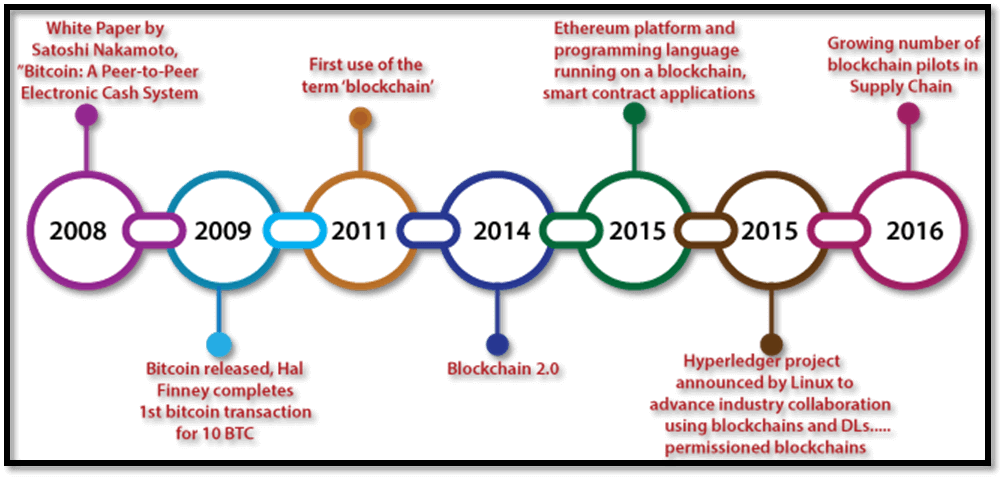History of Blockchain
History of Blockchain: Satoshi Nakamoto modeled the first Blockchain and explained the details of how a technology was well-found to enhance digital trust, given the immutable and decentralization aspect that says nobody would ever be in control of anything.
| 1991 | Two scientist Stuart Haber and W. Scott Stornetta provided working of a cryptographical chain of blocks where no one can damage the time-stamps of the document. The idea behind Blockchain technology was introduced in 1991. |
| 1998 | A computer scientist Nick Szabo, a cryptographer, worked on a decentralized digital currency in 1998. He realized that decentralized ledger could be used for self-executing codes, also called smart contracts. |
| 2008 | In 2008, Satoshi Nakamoto released a nine-page white paper forming the model for a Blockchain. He implemented the first block of a blockchain as the public ledger for transactions using Bitcoin. |
| 2009 | Further, he performed the transaction of 50 bitcoin(digital currency). |
| 2014 | Blockchain 2.0 was released and separated from the cryptocurrency. Its potential for the other field; interbank transactions are explored. |
| 2016 | The second public Blockchain named Ethereum was launched. Ethereum uses smart contracts that are executed automatically once the set criteria are met without the need for any third-party verification. |
Blockchain is for bitcoin as is the Internet for email. In simple words, Blockchain works as record-keeping technology behind bitcoin. The recorded data is verified and kept in a block that further creates the Blockchain. Every new block that gets added to the chain makes it exponentially more challenging to manipulate the stored data.
Through its identity is still in doubt, as no one knows whether Satoshi Nakamoto is a person or organization.

According to the white paper, it was needed a method of time-stamping digital information in the form of data with the following properties.
- Finding a solution for automated time-stamping, without any dependence on the characteristics of the medium where the data appears, so that no one can change even a single bit of data without the change being noticed.
- It will not be possible to stamp a message or information with a time and date different from the actual one.
- The whole logic behind the term cryptocurrency came from cryptography that further divided into two keys one public and one private.
From 2008, people came to know about Blockchain and cryptocurrency. There are lots of people who think Blockchain and Bitcoin are the same, though they are not. The objective of Blockchain is to allow the digital record to be stored and distributed, that cannot be edited.
According to a 2017 survey, there are about 10 million people having bitcoin. Suppose one of those 10 million wants to spend their Bitcoin on shopping, then the Blockchain technology comes in existence. From there, the blockchain technology has progressed and got the popularity into many applications beyond Bitcoin.
Today in 2020, around 15 % of financial organizations and institutions have started working on Blockchain technology. A survey reports, Blockchain in 2030 could generate $3 trillion per annum in business value and power 20 percent of the global economic infrastructure by then.